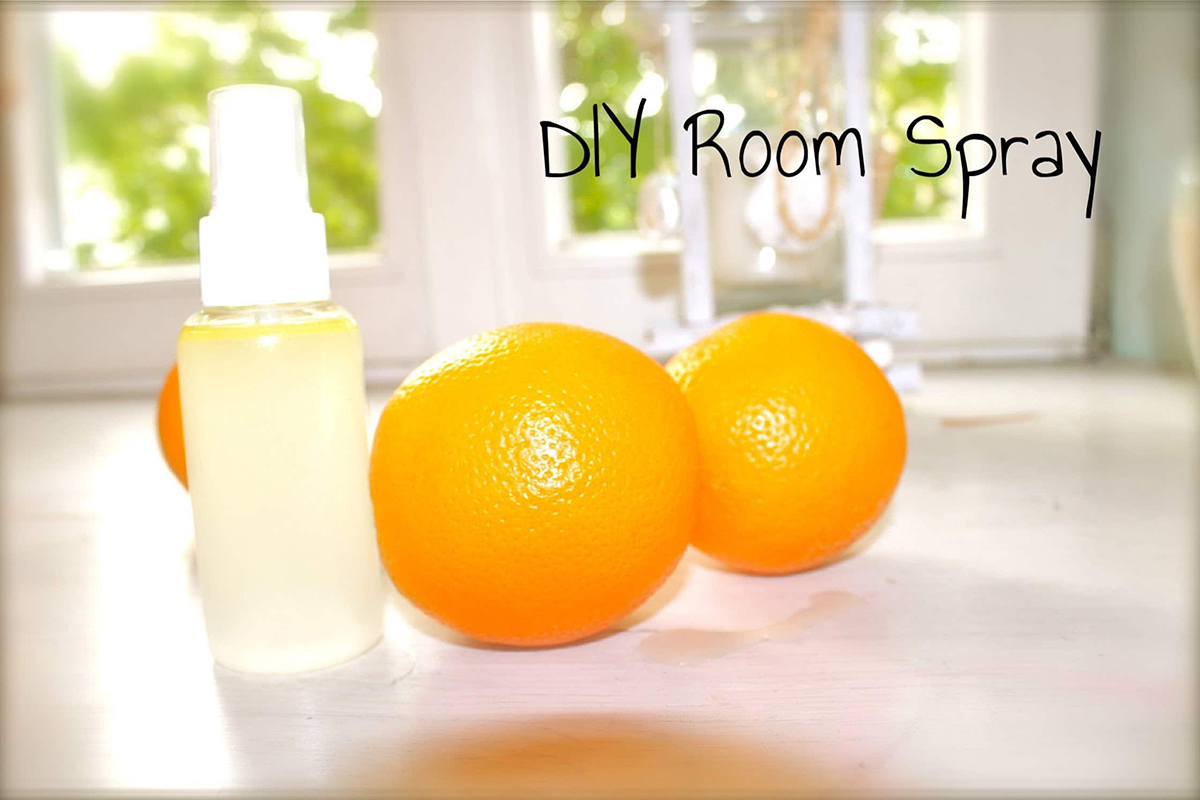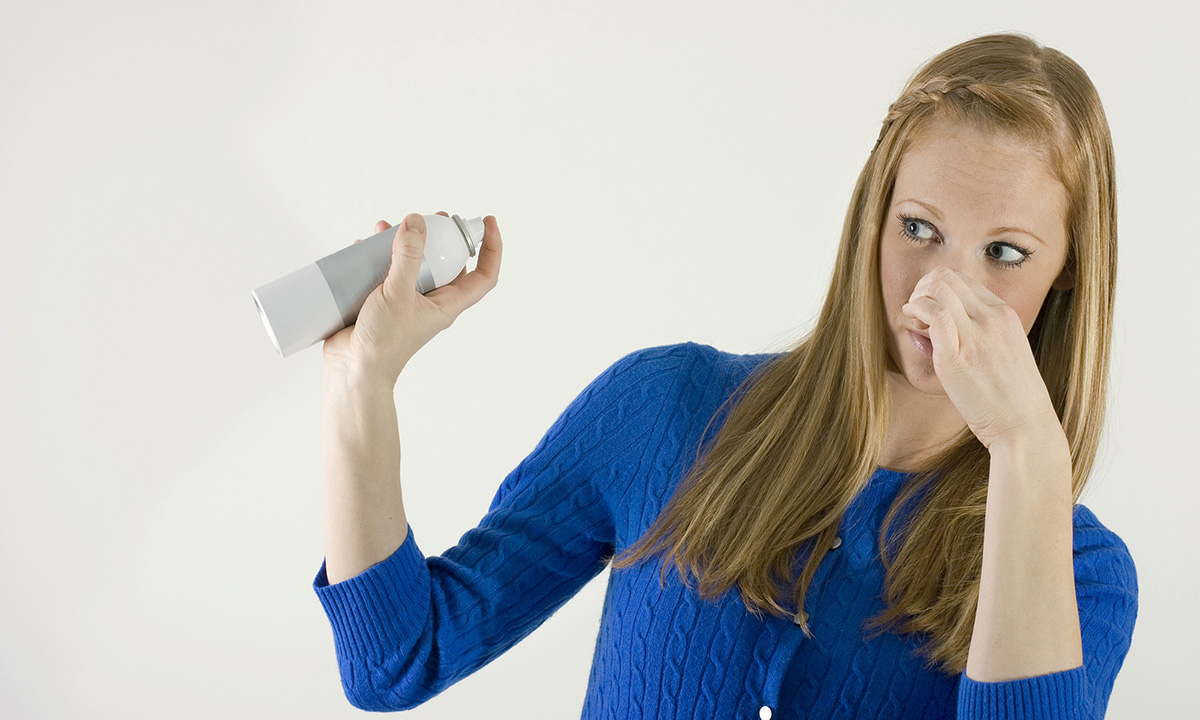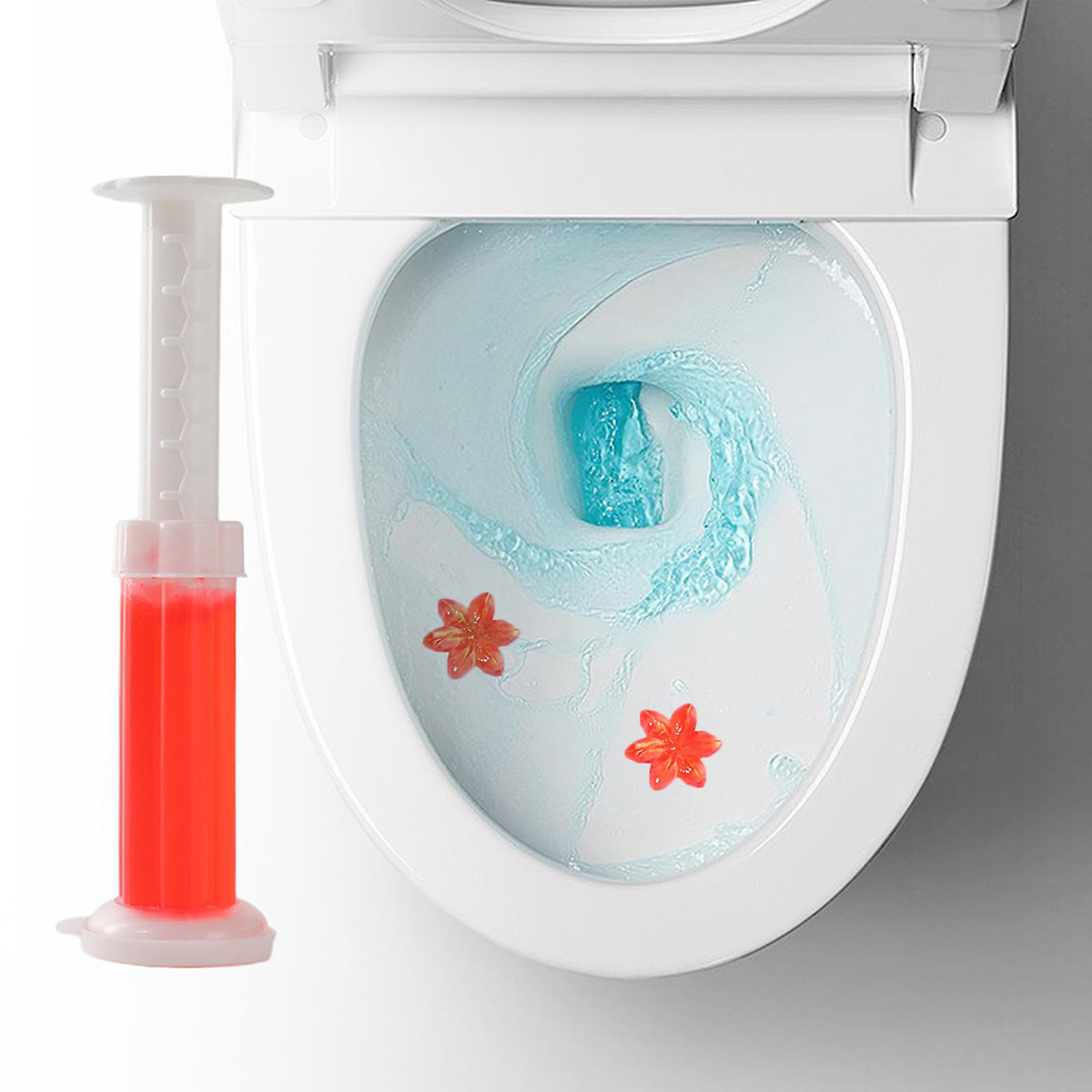Home>Health & Lifestyle>Air Quality & Filtration>What Is An Illegal Air Freshener


Air Quality & Filtration
What Is An Illegal Air Freshener
Published: December 18, 2023
Discover the dangers of using illegal air fresheners and how they can impact air quality and filtration. Learn about the risks and alternatives. Protect your health and environment.
(Many of the links in this article redirect to a specific reviewed product. Your purchase of these products through affiliate links helps to generate commission for Storables.com, at no extra cost. Learn more)
Introduction
Welcome to the world of air fresheners, where the quest for a pleasant-smelling environment meets the complexities of legality and safety. While air fresheners are designed to enhance indoor air quality and create a refreshing ambiance, not all products in this category adhere to legal and safety standards. In this article, we will delve into the realm of illegal air fresheners, exploring their definition, types, risks, identification methods, and the legal consequences associated with their use.
Illegal air fresheners pose a significant threat to public health and safety, as they often contain harmful chemicals and fail to meet regulatory requirements. Understanding the implications of using such products is vital for safeguarding both individual well-being and environmental sustainability. Join us on this enlightening journey to unravel the hidden truths behind illegal air fresheners and learn how to navigate the landscape of air quality regulation with confidence.
Key Takeaways:
- Illegal air fresheners can harm your health and the environment by containing harmful chemicals and lacking proper labeling. It’s important to be vigilant and check for compliance to avoid risks.
- Using illegal air fresheners can lead to penalties, product recalls, and reputational damage for businesses. It’s crucial to prioritize legal, compliant products for a healthier indoor environment.
Read more: What Is In Febreze Air Freshener
Definition of an Illegal Air Freshener
An illegal air freshener refers to a product that does not comply with the regulations and standards set forth by governing bodies responsible for air quality and consumer safety. These regulations encompass various aspects, including the permissible ingredients, labeling requirements, emission levels, and overall product safety. When an air freshener fails to meet these criteria, it is deemed illegal and poses potential hazards to human health and the environment.
One of the primary reasons for an air freshener to be classified as illegal is the presence of harmful or prohibited substances in its formulation. These substances may include volatile organic compounds (VOCs), phthalates, formaldehyde, and other toxic chemicals that can compromise indoor air quality and trigger adverse health effects upon inhalation. Moreover, illegal air fresheners may lack essential labeling information, such as ingredient disclosure, usage instructions, and safety warnings, thereby leaving consumers uninformed about potential risks associated with the product.
Furthermore, the illegal status of an air freshener can stem from its failure to meet emission standards, especially in the case of air fresheners designed for use in vehicles or enclosed spaces. Excessive emissions of volatile compounds can contribute to air pollution and exacerbate respiratory conditions, making non-compliant air fresheners a significant concern from both environmental and public health perspectives.
It is essential to note that the legality of air fresheners is not solely determined by their potential to emit harmful substances. The packaging, marketing claims, and adherence to specific industry standards also play a crucial role in defining the legality of these products. Therefore, consumers and retailers must exercise vigilance in discerning the compliance of air fresheners with applicable regulations to mitigate the associated risks.
As we continue our exploration, we will delve deeper into the types of illegal air fresheners, shedding light on the diverse forms in which non-compliant products may manifest and the inherent dangers they pose to individuals and communities.
Types of Illegal Air Fresheners
Illegal air fresheners come in various forms, each presenting unique challenges and risks to consumers, indoor air quality, and environmental well-being. Understanding the diverse types of non-compliant air fresheners is crucial for identifying potential hazards and making informed choices when selecting air-enhancing products. Let’s explore some common categories of illegal air fresheners:
- Counterfeit Products: Counterfeit air fresheners mimic popular brand names and often feature packaging and labeling that closely resemble legitimate products. However, these counterfeit items are manufactured without adherence to regulatory standards, leading to the presence of undisclosed or prohibited ingredients. Such products not only infringe upon intellectual property rights but also pose significant health and safety risks to consumers due to their unregulated composition.
- Unlabeled or Misbranded Air Fresheners: Some illegal air fresheners enter the market without proper labeling or with misleading information regarding their contents and usage. Misbranded products may lack essential warnings, usage instructions, or ingredient disclosures, leaving consumers unaware of potential allergens, toxins, or hazardous chemicals present in the air freshener. This lack of transparency can lead to unintended health consequences and environmental pollution.
- Non-Compliant Emission Products: Certain air fresheners, particularly those designed for use in vehicles or enclosed spaces, may emit volatile organic compounds (VOCs) and other harmful substances at levels exceeding regulatory limits. Non-compliant emission products contribute to indoor air pollution, exacerbate respiratory conditions, and pose long-term health risks to occupants of the treated spaces. Their uncontrolled emissions can compromise the overall air quality and environmental sustainability.
- Illegal Ingredients and Formulations: Some air fresheners contain prohibited or hazardous substances, such as phthalates, formaldehyde, and other toxic chemicals, which contravene regulatory restrictions. These illegal ingredients, when dispersed into the air, can lead to adverse health effects, including respiratory irritation, allergies, and potential long-term health implications. Consumers may unknowingly expose themselves and others to these harmful compounds by using non-compliant air fresheners.
By recognizing the diverse manifestations of illegal air fresheners, consumers, retailers, and regulatory authorities can work collaboratively to identify, report, and mitigate the circulation of such products. In the subsequent sections, we will delve into the risks and dangers posed by illegal air fresheners, shedding light on the potential implications of exposure to non-compliant air-enhancing products.
Risks and Dangers of Illegal Air Fresheners
The utilization of illegal air fresheners poses a myriad of risks and dangers to individuals, indoor air quality, and environmental equilibrium. Understanding these potential hazards is paramount for making informed decisions regarding air freshener selection and usage. Let’s explore the significant risks and dangers associated with non-compliant air fresheners:
- Adverse Health Effects: Illegal air fresheners often contain harmful substances, such as volatile organic compounds (VOCs), phthalates, and formaldehyde, which can trigger a range of health issues upon inhalation. These may include respiratory irritation, exacerbation of asthma symptoms, allergic reactions, and long-term health implications. Prolonged exposure to non-compliant air fresheners can compromise the well-being of occupants within the treated spaces.
- Environmental Pollution: Non-compliant air fresheners contribute to environmental pollution by releasing hazardous chemicals into the air. This pollution can degrade outdoor air quality and, in the case of indoor use, contaminate enclosed environments. The emission of volatile compounds from illegal air fresheners can also contribute to the formation of ground-level ozone and other air pollutants, impacting environmental sustainability and public health.
- Fire Hazards: Certain illegal air fresheners may contain flammable ingredients or be packaged in a manner that increases the risk of fire hazards. Improperly formulated or labeled air fresheners can pose a threat of combustion, especially when exposed to heat sources or electrical equipment. This presents a significant safety concern for both residential and commercial settings.
- Unintended Chemical Interactions: Incompatibility between non-compliant air fresheners and other household or commercial products can lead to unintended chemical interactions, potentially resulting in the formation of harmful by-products or exacerbating existing indoor air quality issues. The use of illegal air fresheners in conjunction with other cleaning agents or air treatment products may amplify the risks associated with their use.
By comprehending the risks and dangers posed by illegal air fresheners, consumers and regulatory entities can collaborate to mitigate the circulation and usage of non-compliant products, thereby safeguarding public health and environmental integrity. In the subsequent section, we will delve into methods for identifying illegal air fresheners, empowering individuals to make informed choices and contribute to the promotion of air quality compliance.
When purchasing an air freshener, make sure to check the ingredients and ensure that it complies with local regulations. Some air fresheners may contain chemicals that are banned or restricted, so it’s important to be aware of what you are using in your home or car.
How to Identify Illegal Air Fresheners
Recognizing illegal air fresheners amidst the vast array of available products is essential for safeguarding consumer health and ensuring compliance with regulatory standards. By being vigilant and informed, consumers, retailers, and regulatory authorities can collectively identify non-compliant air fresheners and take appropriate measures to mitigate their presence. Here are key methods for identifying illegal air fresheners:
- Check for Proper Labeling: Legitimate air fresheners comply with labeling requirements, including ingredient disclosure, safety warnings, and proper usage instructions. Non-compliant products may lack essential labeling information or feature misleading claims, signaling potential illegality.
- Verify Certification and Compliance Seals: Look for certification seals and compliance indicators from recognized regulatory bodies or industry organizations. These seals signify that the air freshener has undergone testing and meets the prescribed standards, helping consumers identify legal products.
- Review Ingredient Composition: Examine the ingredient list to identify the presence of prohibited or hazardous substances, such as phthalates, formaldehyde, and excessive volatile organic compounds (VOCs). Non-compliant air fresheners often contain these substances in violation of regulatory restrictions.
- Assess Emission Levels: For air fresheners designed for use in enclosed spaces or vehicles, assess the product’s emission levels. Non-compliant air fresheners may emit volatile compounds at levels exceeding regulatory limits, contributing to indoor air pollution and potential health risks.
- Authenticate Brand and Packaging: Be wary of counterfeit products that mimic the branding and packaging of well-known air freshener brands. Counterfeit items often lack the quality assurance and regulatory compliance upheld by authentic products.
By employing these identification methods, consumers and retailers can discern legal air fresheners from non-compliant ones, thereby reducing the prevalence of illegal products in the market and promoting a safer and healthier indoor environment. In the subsequent section, we will delve into the legal consequences associated with the use of illegal air fresheners, shedding light on the implications of non-compliance with air quality regulations.
Read more: What Is The Safest Air Freshener?
Legal Consequences of Using Illegal Air Fresheners
The utilization of illegal air fresheners can lead to a range of legal consequences, encompassing penalties, regulatory actions, and potential liabilities for both consumers and retailers. Understanding these legal implications is crucial for fostering compliance with air quality regulations and mitigating the risks associated with non-compliant air fresheners. Let’s explore the potential legal consequences of using illegal air fresheners:
- Penalties and Fines: Individuals and businesses found using or selling illegal air fresheners may face monetary penalties and fines imposed by regulatory authorities. These penalties serve as deterrents against the circulation and utilization of non-compliant products, aiming to uphold air quality standards and protect public health.
- Product Seizure and Recall: Regulatory agencies have the authority to seize and recall illegal air fresheners from the market, preventing further distribution and usage of non-compliant products. Product recalls are initiated to mitigate potential health risks and environmental hazards associated with illegal air fresheners.
- Civil and Criminal Liabilities: In cases where the usage or distribution of illegal air fresheners results in harm to individuals or environmental damage, civil and criminal liabilities may arise. This can entail legal actions, compensatory claims, and criminal charges against responsible parties, emphasizing the importance of adhering to air quality regulations.
- Reputational Damage: Businesses involved in the sale or distribution of illegal air fresheners may suffer reputational damage, leading to loss of consumer trust and market credibility. The association with non-compliant products can tarnish the reputation of retailers and manufacturers, impacting their standing within the industry and among consumers.
By comprehending the legal consequences associated with illegal air fresheners, consumers and businesses can make informed decisions regarding the selection, sale, and usage of air-enhancing products, contributing to the promotion of air quality compliance and public safety. In the subsequent section, we will recap the key insights presented in this article, emphasizing the significance of adhering to regulatory standards and making informed choices when it comes to air fresheners.
Conclusion
As we conclude our exploration of illegal air fresheners, it is evident that these non-compliant products pose significant risks to public health, indoor air quality, and environmental sustainability. The proliferation of illegal air fresheners necessitates heightened awareness and vigilance among consumers, retailers, and regulatory entities to mitigate their circulation and usage.
Understanding the definition and types of illegal air fresheners provides valuable insights into the diverse forms in which non-compliant products may manifest, empowering individuals to identify and report such items effectively. The risks and dangers associated with illegal air fresheners underscore the imperative of promoting compliance with air quality regulations and making informed choices when selecting air-enhancing products.
By recognizing the legal consequences of using illegal air fresheners, stakeholders are incentivized to uphold regulatory standards, thereby contributing to public safety and environmental well-being. The penalties, product recalls, and potential liabilities associated with non-compliant air fresheners serve as deterrents against their usage and distribution, reinforcing the importance of adhering to established air quality regulations.
As consumers and businesses navigate the landscape of air fresheners, it is crucial to prioritize the selection and promotion of legal, compliant products, thereby fostering a healthier and safer indoor environment for all. By being mindful of proper labeling, certification seals, ingredient composition, and emission levels, individuals can actively contribute to the reduction of illegal air fresheners in the market, promoting air quality compliance and consumer well-being.
In essence, the quest for a refreshing and pleasant indoor environment should align with the imperative of upholding regulatory standards and safeguarding public health. Through informed decision-making, advocacy for compliance, and collaborative efforts, we can strive towards a future where illegal air fresheners are marginalized, and legal, safe, and effective air-enhancing products take center stage, promoting a healthier and more sustainable living environment for all.
Frequently Asked Questions about What Is An Illegal Air Freshener
Was this page helpful?
At Storables.com, we guarantee accurate and reliable information. Our content, validated by Expert Board Contributors, is crafted following stringent Editorial Policies. We're committed to providing you with well-researched, expert-backed insights for all your informational needs.















0 thoughts on “What Is An Illegal Air Freshener”